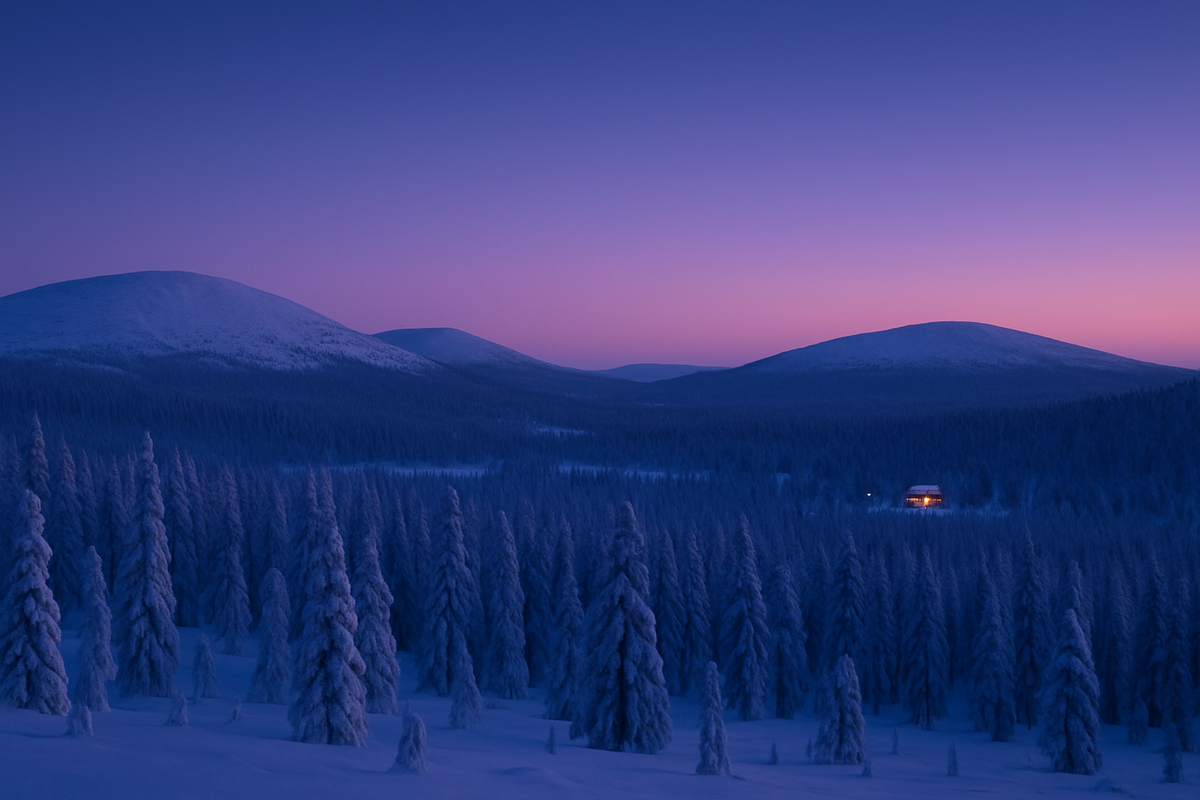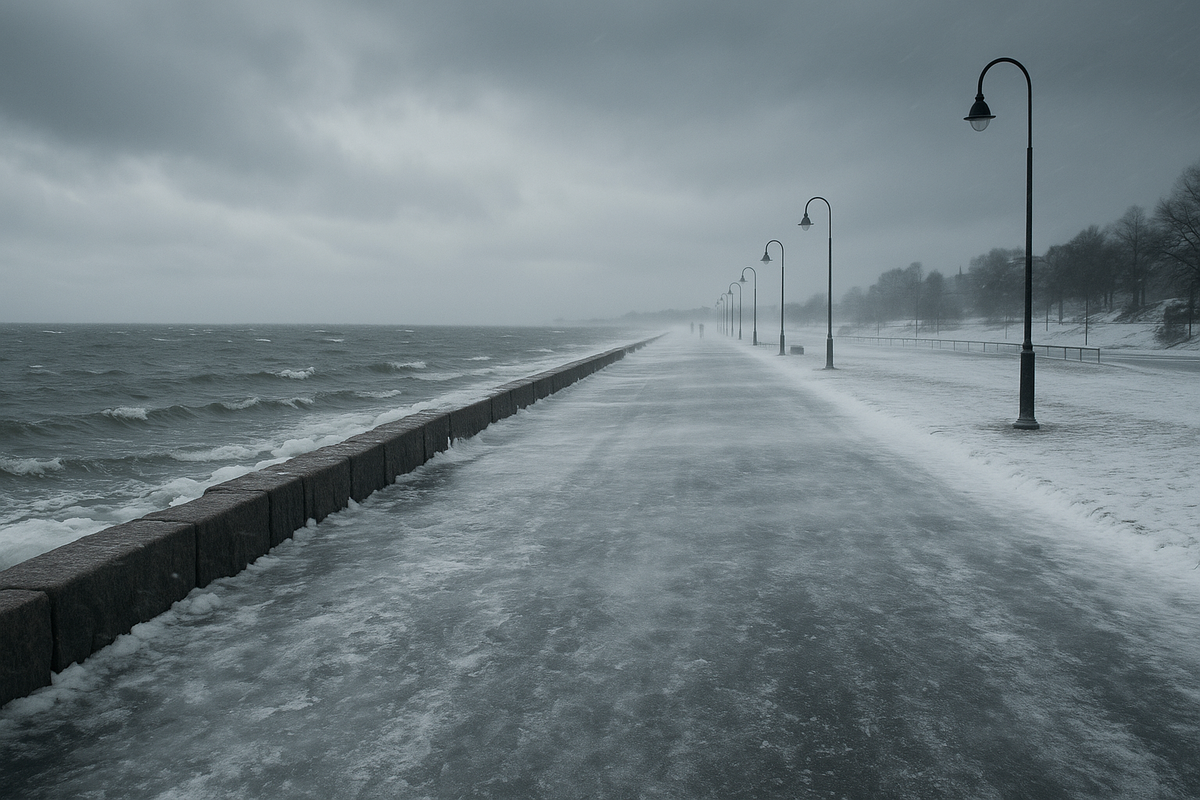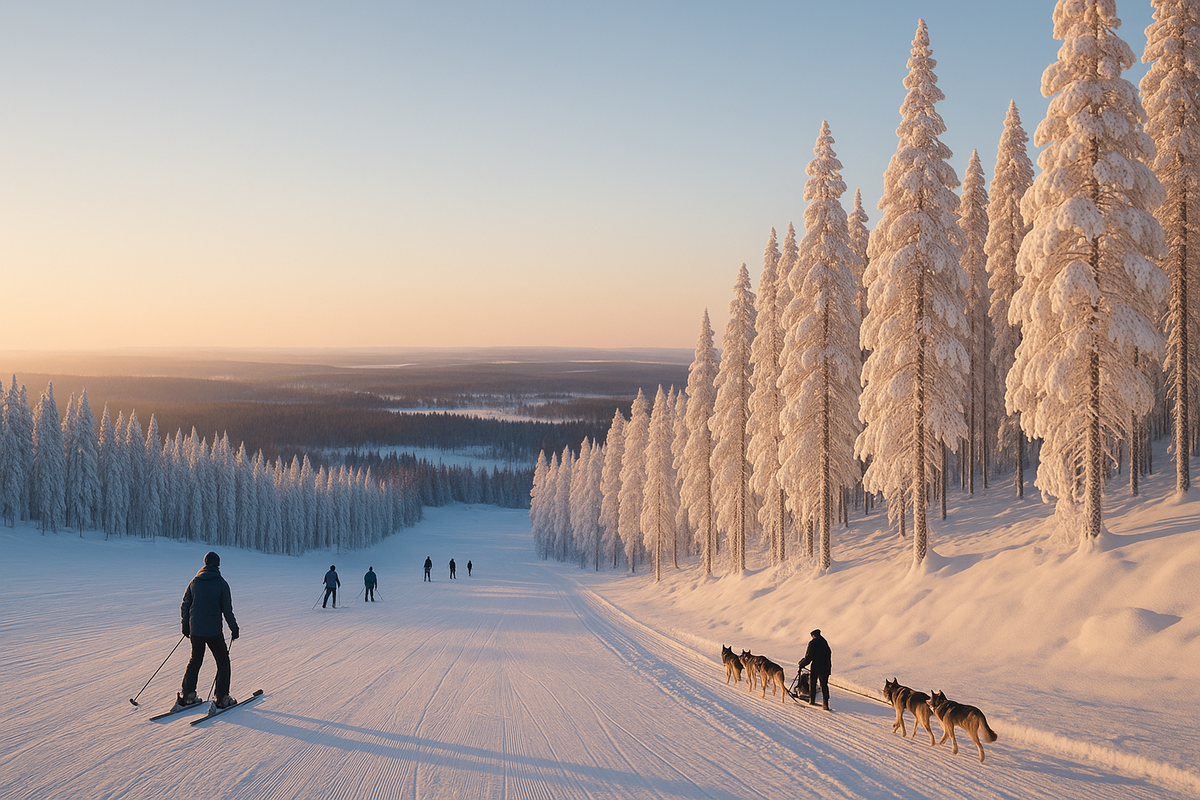❄️ Winter in Finnish: frosty air, blue twilight and cosy evenings in the sauna
In this article, you will learn how winter in the south is different from winter in Lapland, when the polar night begins and how daylight hours change, what temperatures and winds to expect in December–February, when snow cover is established, what equipment to bring with you, and how to plan winter activities — from snowmobiles and husky safaris to nights with the northern lights.

What is 'kaamos'?
That's the word for the time of year when the sun doesn't rise and doesn't set.
In Lapland (Saariselkä, Inari, Utsjoki), it's dark for most of December and January. During this time, the sun doesn't rise above the horizon, but there's still some light during the day. This light, called the 'blue twilight', makes it nice to take walks and take photos. In Rovaniemi, the full polar night is shorter, but the nights are very light in December. In the south (Helsinki, Turku, Tampere), daylight hours in December and January are short (about 6 hours), so it is better to plan trips and transfers around noon.
Temperatures, wind speed and the temperature felt by the air.
The south is between -1 and -7 °C, with frequent thaws. Lapland is consistently colder, with temperatures of -10 to -20 °C at night when it is clear. The wind on the Baltic Sea makes it feel colder. At −5 °C and 10 m/s, it feels like −13 to −15 °C. On high, flat areas, take a face shield and goggles — wet snow and strong winds can make it feel much colder than it is.

Snow, black ice and 'blue' days: when and how much of it?
In Lapland, the snow usually stays on the ground from October to May. In the south, snow may fall in 'waves' with thaws and ice forming on pavements again — tools to grip the ice will be needed. It's harder to see on the roads when it's snowing, so plan your journeys for the day and allow more time.
Things to consider when planning winter activities.
Skiing and snowboarding can be enjoyed as early as late October–November thanks to special measures to protect the snow; in spring, the slopes remain open until April–May. You can go on a husky safari or ride a snowmobile when there is a thick layer of snow and ice on the ground. Look out for when the weather will be warm enough. You can go looking for the northern lights from late August to March, but you are more likely to see them in winter because it is darker at night. Leave the city and choose a clear weather forecast.

Please bring clothes that you can wear several layers of, shoes, and clothes that will keep you warm and dry.
The best clothes for this are three layers: a pair of thermal underwear (wool or synthetic), an insulating layer (fleece or down) and a waterproof layer (wind or snow). Mittens keep your hands warmer than gloves, and a buff or balaclava will keep your face warm. Clear or dark glasses will protect your eyes from the wind and wet snow. For cities, prepare ice grips and waterproof shoes with treads; for activities, warm socks and spare gloves.
Planning your day: City vs. Lapland
In Helsinki, you can walk around easily during the day and visit museums and cafes. You can also watch the sunset from a safe spot on a hill. In Lapland, make the most of the 'blue hour' – the time just before sunrise and just after sunset – by starting your walks around midday. Leave the evening free for a sauna, dinner and looking out for the northern lights. When you're out on the trails in a blizzard, plan for warm stops every 2-3 hours.
Please write your thoughts in the comments. If you have interesting photos, personal experiences or questions about the topic of the article, please leave a comment. We will definitely reply, because we are making the most useful and popular blog about Finland!
FAQ — frequently asked questions
Yes, but it is unstable: thaws and re-freezing are possible. Plan flexibly and take into account black ice after days above freezing.
The further north, the better: Rovaniemi, Saariselkä, Inari. The main enemy is cloud cover; leave the city and monitor the forecast.
A membrane jacket with a hood, a buff/balaclava, goggles, mittens. It will feel like around −13...−15 °C.
Only on officially open routes and with confirmed thickness. After thaws and winds, the ice quickly loses its strength.
December–March is the most reliable; an early start is possible in November at ‘snow farms’, and in spring the best hours are in the morning on ‘hard’ snow.
Frost and sufficient snow cover are required. During thaws, tours are postponed to the morning ‘minuses’ or the nearest days.
Layered clothing (thermal + fleece + membrane), spare mittens/socks, a buff. Take warm breaks indoors every 40-60 minutes.
Traffic is usually stable, but in extreme cold, there may be occasional delays and cancellations. Allow extra time and have a plan B.





0 comments
Log in to leave a comment